
Traditional Hand Block Printing
Hand block printing is the earliest, simplest and slowest of all textile printing methods. At BANJAARA, we preserve this ancient craft through authentic techniques passed down through generations of skilled artisans in Rajasthan, India.
The Heritage of Block Printing
This traditional method involves hand-carved wooden blocks pressed onto fabric with natural dyes, creating distinctive patterns that celebrate imperfection as beauty. The craft flourished particularly in Rajasthan, where artisan families developed unique regional styles that continue unchanged today.
Understanding the Dabu Process
Our artisans employ the traditional Dabu technique, a mud-resist printing method requiring exceptional skill and patience.

STEP 1.
Applying Dabu
Dabu paste is prepared each morning by master printers using black clay, wheat flour, natural gum and lime water. This mixture is poured into printing trays covered with wire grills. After each print, blocks are reloaded with fresh mud to ensure clear, consistent impressions throughout the pattern.
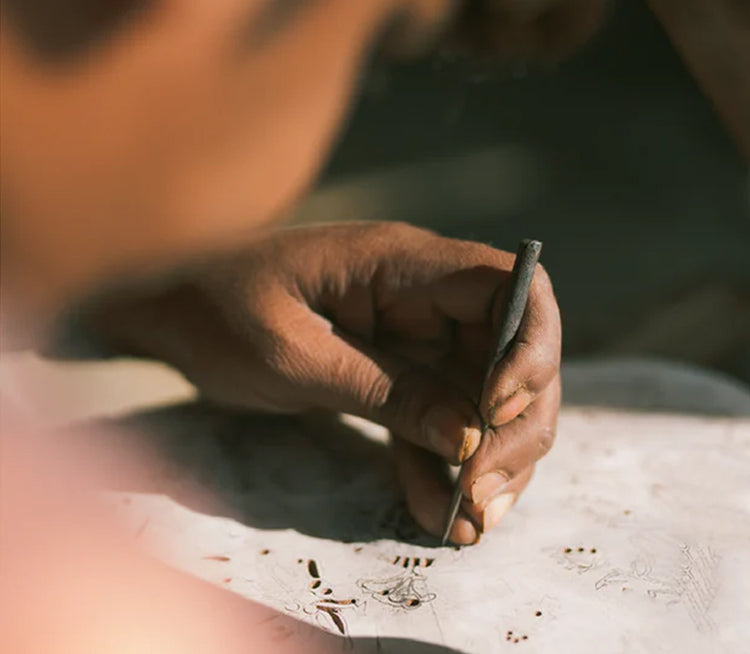
STEP 2.
Block Carving
Skilled artisans carve intricate designs into wooden blocks using traditional tools including small hammers, chisels and hand drills. Each block requires days of meticulous work, with patterns becoming treasured tools often passed between generations within artisan families.
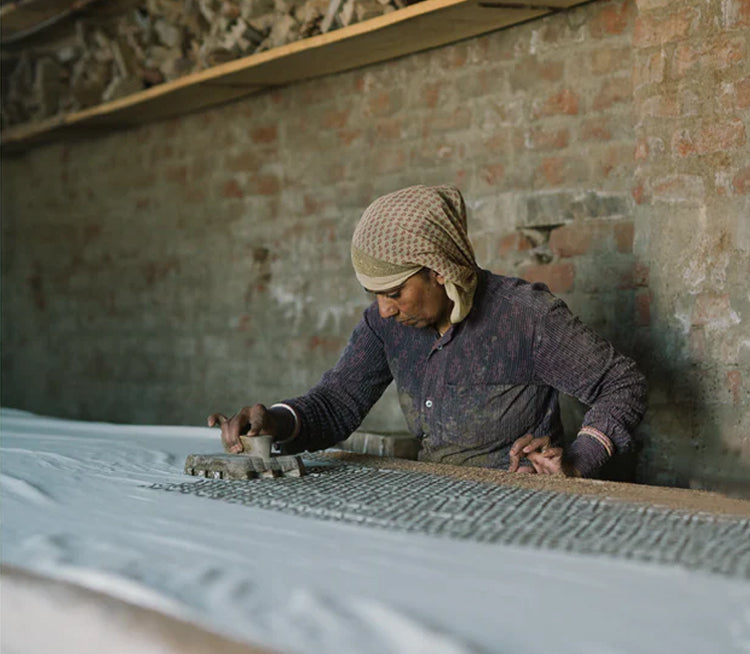
STEP 3.
Printing
Once blocks are loaded with mud, designs are carefully lined up on stretched fabric and pressed firmly. This transfers the mud design with remarkable precision, creating the resist pattern that will protect areas from dye penetration.
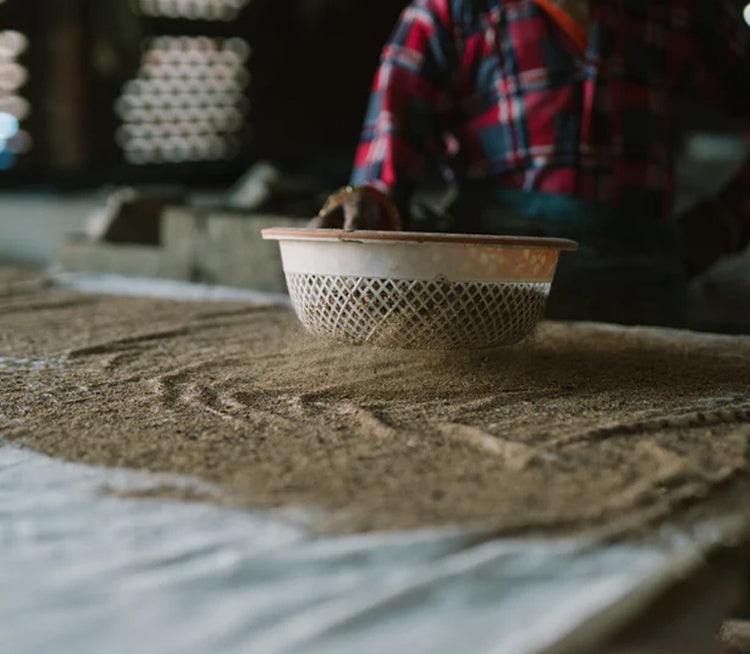
STEP 4.
Sawdust Protection
Before mud dries, the women artisans cover printed fabric with fine sawdust. This crucial step allows sawdust to bind with wet Dabu paste, creating robust resist barriers. The fabric then dries naturally under intense Rajasthan sun, strengthening resist properties. Careful washing removes dirt whilst preserving the mud paste, preparing fabric for optimal dye absorption.
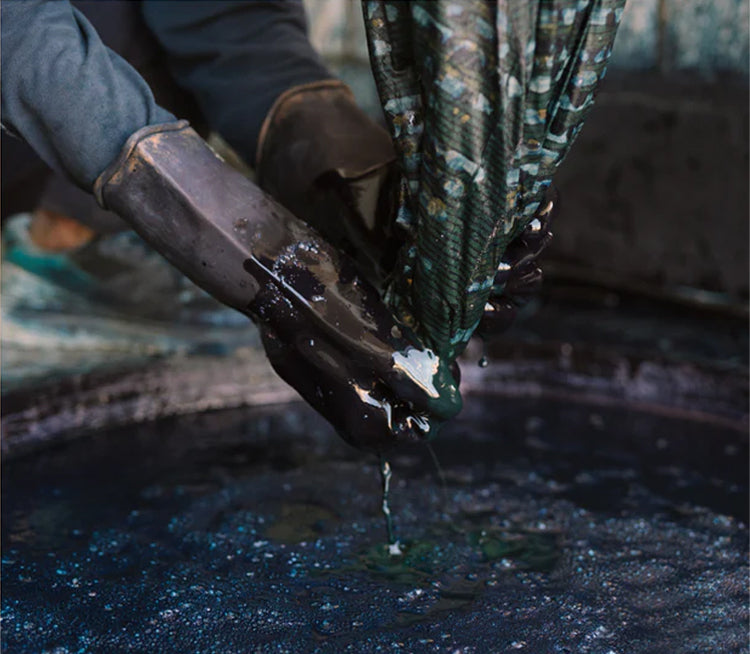
STEP 5.
Natural Dyeing
Prepared fabric enters traditional dyeing wells filled with plant-based colours. Multiple immersions ensure rich colour saturation, with three to four dips creating desired depth. Between each immersion, fabric dries in sunlight, allowing colours to develop and intensify gradually.
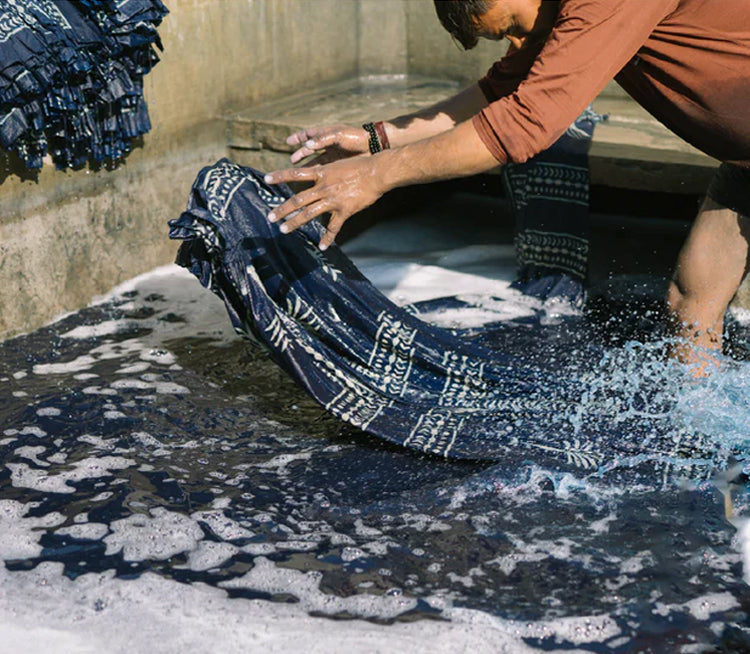
STEP 6.
Final Washing
Once colours reach full intensity, the women artisans wash fabrics to remove excess dye and Dabu paste. This reveals the final pattern, with clean white resist areas contrasting beautifully against vibrant dyed sections. Final sun-drying completes the transformation.
Living Art
Choosing BANJAARA block-printed garments supports sustainable fashion whilst acquiring unique pieces that celebrate traditional craftsmanship. Each garment carries centuries of accumulated knowledge, creating meaningful connections between wearer and maker through authentic slow fashion manufacturing.

